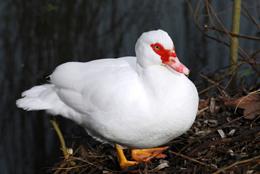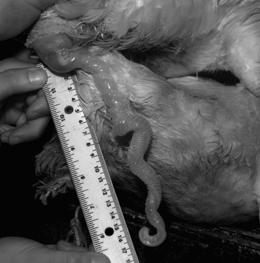the twisted sex lives of muscovy ducks
The sex wars of ducks : Nature News
Published online 23 December 2009 | Nature | doi:10.1038/news.2009.1159
News
The sex wars of ducks
An evolutionary battle against unwanted fertilization.
 The twisted sex life of Muscovy ducks is the result of an evolutionary battle between males and females.iStockphoto
The twisted sex life of Muscovy ducks is the result of an evolutionary battle between males and females.iStockphotoScientists have elucidated the mechanism by which female ducks thwart forced copulations.
Unwanted sex is an unpleasant fact of life for many female ducks. After carefully selecting a mate, developing a relationship and breeding, a female must face groups of males that did not find mates and want nothing more than a quick fling.
Now a team led by Patricia Brennan, an evolutionary biologist at Yale University in New Haven, Connecticut, has described the morphology of the duck penis and found how the physiology and behaviour of female ducks can help to prevent unwanted sperm from being deposited far inside the oviduct.
Birds of both sexes have a single reproductive and excretory opening — the cloaca. Usually, sperm is transferred from male to female in a brief 'cloacal kiss'. Waterfowl, however, are different. They, like ostriches, have penises. In ducks, these appear through the cloaca very quickly and can be longer than 40 centimetres. Making things more complicated, the male and female genitalia spiral in corkscrew fashion rather than being straight.
Fowl play
"I have long had a fantasy about working out where these enormous penises actually went inside the female and mentioned to [Brennan] years ago that it was too bad we didn't have a perspex female for males to mount," says Tim Birkhead, an avian biologist at the University of Sheffield, UK.
“I have long had a fantasy about working out where these enormous penises actually went inside the female.”
Tim Birkhead
University of Sheffield
Brennan tried the next best thing. Working with a commercial breeder of Muscovy ducks (Cairina moschata), Brennan observed more than 50 male ducks that were conditioned to ejaculate when shown a stimulating female. The males were presented with clear containers of different shapes after being exposed to attractive females and as their penises everted (the duck equivalent of an erection) into the containers, the team used high-speed video to capture details of how the penises worked, and to determine how the shape of the container affected eversion.
The containers varied in shape from being straight to being anticlockwise corkscrews that followed the shape of the Muscovy duck's penis, or clockwise corkscrews or bent at 135° to better mimic the shape of the vagina. "We wanted to know whether the shape that we were seeing in females was an adaptation that was helping them to respond to unwanted sex," says Brennan.
Out for a duck
The team reports in Proceedings of the Royal Society B1 that eversion of the Moscovy duck penis, to a length of up to 20 centimetres, took a grand total of about 0.3 seconds in air and 0.5–0.8 seconds in the female-mimicking glass tubes. Ejaculation happened at the moment of maximum eversion.
When penises everted into the clockwise-corkscrew shape mimicking the female vagina, they could not get nearly so far down the tube as they could in the anticlockwise-corkscrew and straight containers (see video). In all cases, the males released semen, but their inability to get as far in the clockwise-corkscrew container and the acute-angled container suggested that in such environments males would have a lower chance of reproductive success.
 Everted male ducks can have penises longer than 40 centimetres.Patricia Brennan
Everted male ducks can have penises longer than 40 centimetres.Patricia BrennanThe work backs up earlier research2 in which Brennan and her colleagues hypothesized that the sexual organs of ducks have evolved as a result of sexual conflict to prevent the sperm from unwanted males from fertilizing eggs and to help females maintain control of reproduction even as they endure unwanted sexual encounters.
Indeed, in the latest work, the team observed that sexually receptive females contract and relax their cloacal muscles in a way that could help the male achieve full penetration. But during forced copulations, the females struggle violently, which would reduce the likelihood of fertilization.
"The female presumably relaxes her vagina to allow access. This is telling us a lot about forced copulation. Clearly there is an evolutionary battle of the sexes taking place," says Birkhead.



